The history of Formula One dates back to 1950. The first World Championship race was held at Silverstone in the United Kingdom. Since then, the sport has grown into a global phenomenon. There are millions of fans tuning in to watch the high-speed, high-tech, and high-stakes competition.
The history of Formula One is filled with memorable moments, legendary drivers, and ground-breaking innovations. They have al helped shape the sport into what it is today. Although it has changed and advanced over the years, the spirit of F1 lives on.
The history of Formula One is filled with legendary drivers who have left their mark on the sport. From Juan Manuel Fangio and Jim Clark to Ayrton Senna and Michael Schumacher, these drivers have become icons in the world of racing.
More recent champions like Lewis Hamilton, Sebastian Vettel, Max Verstappen, and Fernando Alonso have continued to push the limits of what is possible on the track and cemented their place in Formula One history as some of the greatest drivers of all time.
The History Of Formula One
Motor car racing and The History Of Formula One can trace their birth to a period in the late 1800s. Almost immediately after the internal combustion-powered car was invented. The first competition was held in 1894. This was a reliability test run between Paris and Rouen in France, over 50 miles (80 km). The car won at the heady average speed of 10.2 mph (16.4 kph).
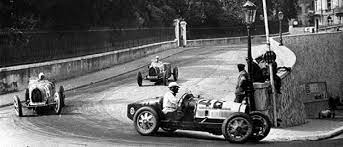
The first actual race, which was won by the fastest car and driver, was held in 1895. The race was born in France and involved a return journey from Paris to Bordeaux and over 1,178 km. The winning car achieved an average speed of 15 mph (24.15 km/h).
This is a “tad” slower than the 186 mph (300 km/h) speeds achieved by modern F1 cars. It still represented a 50% speed increase over the two races. It is these stepping stones on which today’s F1 technology is built.
The First Race
Drivers held America’s first motor car race in 1895, running between Chicago and Evanston, Illinois.
The first events involved a race from one town to the next. It sometimes included a return leg being added in some instances.
The first race held on a “closed” circuit was in 1898 at the Course de Périgueux. The distance of one lap was 90 miles (145 km). Today’s circuits are significantly shorter (five to 15 miles of modern circuits)!
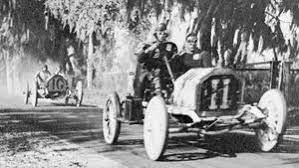
The History Of Formula One – The 1900s
By 1900 cars were starting to achieve 50 mph (80km/h). In just 6 years, the speeds of these cars had increased by 500%; this is an impressive advance.
The first annual competition was introduced by James Gordon Bennett, who was the then-owner of The New York Herald. These were called the Bennet trophy races from 1901 to 1905. The Bennet Trophy races were held at the following circuits
- Circuit of Ireland (1903)
- Taunus Rundstrecke in Germany (1904)
- Circuit d’Auvergne (1905).
The series was eventually disbanded because the French were unhappy that the regulations stipulated they could only enter three cars.
The origins of Formula One can be traced back to the 1920s and 30s. During this time several motor racing events took place across Europe. These events were often dangerous, with little regulation and safety precautions. However, they attracted large crowds and the attention of car manufacturers who sought to showcase their latest innovations.
The Beginning Of F1 As A Properly Organized Sport
In 1946, the Fédération Internationale de l’Automobile (FIA), the international governing body for motorsports, was founded. Its primary goal was to regulate and promote international motor racing.
After World War II motor car racing established a new formula. It was first called Formula A and included cars with1,500 cc supercharged engines and 4,500 cc non supercharged engines.
The race distance was reduced from 311 miles (500 km) to 186 miles (300 km.)
The names that ended up being used was Formula One and was intended to be the pinnacle of motorsport.
Where Did The History Of Formula One Start?
The first championship season was held across the following seven nations.
- United Kingdom
- Monaco
- America
- Switzerland
- Belgium
- France
- Italy
The American round was held as the Indianapolis 500. This was a political ploy to make the series seem fully international.
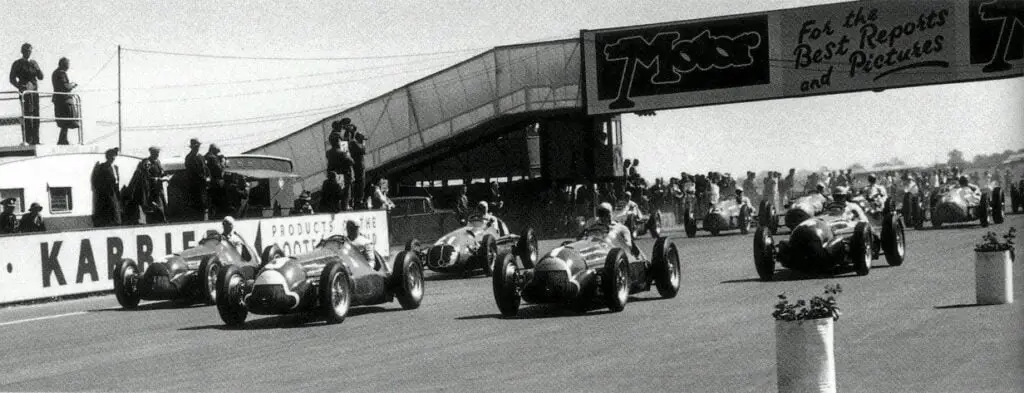
The first official Formula One World Championship race occurred at Silverstone in the United Kingdom in 1950. The race was won by Giuseppe Farina, driving an Alfa Romeo. The championship consisted of seven races, held in Europe. It was won by Farina.
Giuseppe (“Nino”) Farina drove an Alfa Roméo 158 and won the races in Belgium, Switzerland and Italy. He also had non-championship wins at Bari and Donnington Park
No drivers raced in both the American and European legs of the championship. It took eleven years until, in 1961, Jack Brabham took his Cooper to race in the Indianapolis 500.
The History Of Formula One – The British Era
In the early years of Formula One, the cars were relatively simple compared to today’s high-tech machines.
At the start of modern Formula One, the cars had large-displacement engines mounted in front. There was minimal testing and design improvement.
They were open-wheeled, with exposed engines and little aerodynamic aids. Many teams used four-cylinder engines that had been adapted from pre-war Grand Prix cars.
As the sport’s popularity grew, so did the demand for more powerful and advanced cars. The introduction of mid-engine cars in the late 1950s revolutionized the sport. These units allowed for better weight distribution and improved handling.
The 1960s are termed the British era when Teams like Cooper, BRM, Brabham and Lotus dominated. The British drivers Clark, Hill and Sir Jack Brabham scored 11 World Titles, during his period.
The Wings And Ground Effect Era
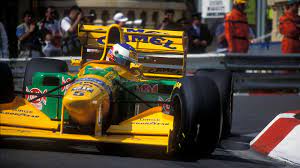
The 1970s saw several significant developments in Formula One.
The introduction of wings and spoilers greatly improved the cars’ aerodynamics. This allowed them to achieve higher speeds and better handling. The use of ground-effect technology in the late 70s further improved the cars’ handling. This system created a low-pressure zone under the car, which increased downforce and grip.
During this period, a number of legendary drivers emerged, including Jim Clark, Jackie Stewart, Niki Lauda, and Emerson Fittipaldi. These drivers not only set records and won championships but also helped shape the sport’s culture and style.
The Arrival Of The Ford Cosworth Engine
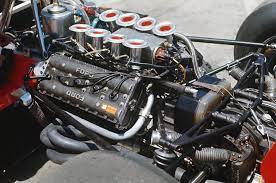
The History Of Formula One is tied in with the Ford Cosworth engine. This was one of the most legendary engines in the history of Formula One. The engine was developed in the 1960s by the British engineering firm Cosworth, in partnership with Ford. The engine was used by many successful teams throughout the 1960s, 70s, and 80s. It truly helped to revolutionize the sport of Formula One.
The Ford Cosworth engine was initially designed to be a racing engine for sports car racing. When the new regulations for Formula One were introduced in 1966, the Cosworth engine was modified. It was used in the sport for the first time in 1967. The first team to use the engine in Formula One was Lotus. It quickly proved to be a winning combination.
The Engine Detail
The Cosworth engine was a V8 engine that produced around 400 horsepower in its early iterations. It became one of the best, most flexible, and most powerful engines in the sport at the time. At just over 150 kg it was also relatively lightweight. That made it a popular choice among teams looking for a competitive edge.
One of the key advantages of the Cosworth engine was its reliability. Unlike many competitors, the Cosworth engine was designed to be easy to maintain and repair. Teams could focus more on developing the car and the driver rather than worrying about engine problems.
The History Of Formula One – The Engine In The 1960s And 70s
The engine’s success in the 1960s and 70s helped to cement its place in Formula One history. Over the years, the engine was modified and improved, with new versions being introduced in the 1980s and 90s.
Despite these changes, the engine’s basic design remained largely the same. It continued to be used by many successful teams throughout the sport’s history.
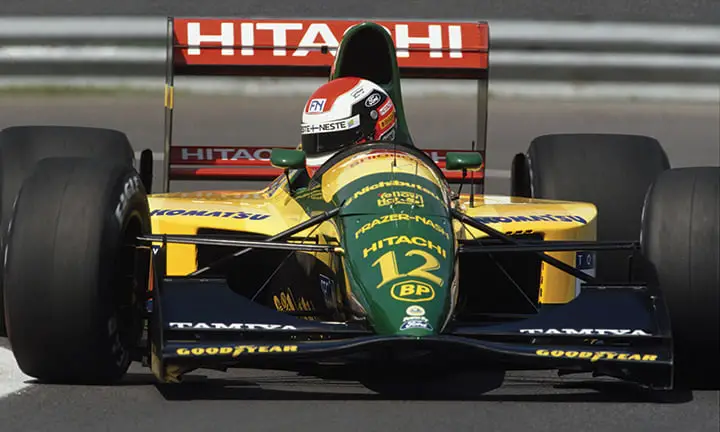
In The History Of Formula One, some of the most successful teams to use the Ford Cosworth engine. These included Lotus, McLaren, Williams, and Tyrrell. The engine helped these teams to win multiple championships. Drivers achieved success with engines included.
- Jackie Stewart.
- Emerson Fittipaldi.
- Nigel Mansell.
Ford Cosworth Engine
In addition to its success in Formula One, the Ford Cosworth engine also significantly impacted the wider automotive industry. The engine’s design and technology helped push the boundaries of automotive engineering. Many of the innovations developed for the engine were later used in production cars.
Today, the Ford Cosworth engine is considered a classic in motorsports. It may is longer be used in Formula One. Despite this legacy lives on and continues to be revered by fans and enthusiasts worldwide.
In conclusion, the Ford Cosworth engine is one of the most iconic engines in the history of Formula One. Its combination of power, reliability, and innovation helped to revolutionize the sport. Its success paved the way for many of the developments that have taken place in motorsports since then. The legacy of the Cosworth engine lives on. It remains a true testament to the ingenuity and passion of the engineers who designed and developed it.
The History Of Formula One – The Turbo Era
The 1980s saw the introduction of turbocharged engines, which provided even more power and speed. However, these engines were also notoriously unreliable, leading to several spectacular engine failures during races.
In the 1980s, Formula One also became increasingly commercialized, with more and more sponsorship deals and television coverage. The sport began to attract a new generation of fans, who were drawn to the drivers’ high-speed action and personalities.
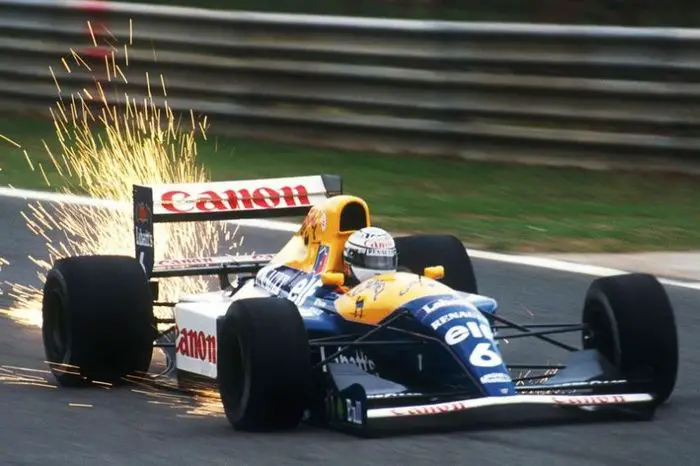
The Active Car Era
For the1987 season Team Lotus revealed the first Formula One car with a computer-controlled “active suspension” system. The technology was called “Active suspension” and was followed later on by the the following advances
- Semi-automatic gearbox
- “black box” controlled starting programs
- fly-by-wire controls
- anti-lock brakes
The result of the technologies was that in the 1990s s two dominant teams emerged – Williams and McLaren. Williams was run by the legendary Sir Frank Williams and technical director Patrick Head.
The team won four back to back constructors’ championships between1992 and 1995.
The McLaren team was led by Ron Dennis and designer Adrian Newey (now of Red Bull fame.) The team won three consecutive titles between 1998 to 2000.
The 1990s also saw the rise of Michael Schumacher, one of the greatest drivers in Formula One history. Schumacher won his first championship in 1994, driving for Benetton. He went on to win seven championships over his career, five of which were won with Ferrari.
The 1990s had been a period of change and progress for Formula One. There were new technological innovations, increased commercialization, and new drivers and teams emerging. The 2000s continued this trend, with a further evolution of the sport in terms of technology, regulations, and cultural significance.
The Dominance Of Ferrari And Schumacher
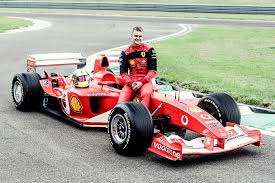
The 2000s began with the continuation of the dominance of Ferrari and Michael Schumacher. Schumacher won his first championship with Ferrari in 2000. This began a run of five consecutive championships that ensured his place as one of the greatest drivers in the sport’s history. Ferrari also won six consecutive constructors’ championships during this period.
Schumacher’s success was due in part to his driving skill and the technological advances that Ferrari had made. The team had invested heavily in research and development, particularly in aerodynamics and engine design. This gave them a significant advantage over their rivals, allowing them to consistently produce faster and more reliable cars.
However, Schumacher’s dominance was not without controversy. In 2002, he won the championship by a record margin, leading some to accuse Ferrari of using illegal technology. The team was investigated, but no evidence of wrongdoing was found.
Schumacher continued to compete in Formula One until 2012, winning seven championships, five of which were won with Ferrari. He retired as one of the most successful drivers in the sport’s history. He won won 91 races and achieved 155 podium finishes.
F1 World Championship Winners

The following lists every F1 World Championship winner since the first race was held in 1950.
The F1 Winners In The 1950s
| Season | Driver | Team | Engine |
|---|---|---|---|
| 1950 | Nino Farina | Alfa Romeo | N/A |
| 1951 | Juan Manuel Fangio | Alfa Romeo | N/A |
| 1952 | Alberto Ascari | Ferrari | N/A |
| 1953 | Alberto Ascari | Ferrari | N/A |
| 1954 | Juan Manuel Fangio | Mercedes | N/A |
| 1955 | Juan Manuel Fangio | Mercedes | N/A |
| 1956 | Juan Manuel Fangio | Ferrari | N/A |
| 1957 | Juan Manuel Fangio | Maserati | N/A |
| 1958 | Mike Hawthorn | Ferrari | Vanwall |
| 1959 | Jack Brabham | Cooper-Climax | Climax |
The F1 Winners In The 1960s
| Season | Driver | Team | Engine |
|---|---|---|---|
| 1960 | Jack Brabham | Cooper-Climax | Maserati |
| 1961 | Phil Hill | Ferrari | Ferrari |
| 1962 | Graham Hill | BRM | BRM |
| 1963 | Jim Clark | Team Lotus | BRM |
| 1964 | John Surtees | Ferrari | Ferrari |
| 1965 | Jim Clark | Team Lotus | Climax |
| 1966 | Jack Brabham | Brabham | Repco |
| 1967 | Denny Hulme | Brabham | Repco |
| 1968 | Graham Hill | Team Lotus | Ford |
| 1969 | Jackie Stewart | Matra | Ford |
The F1 Winners In The 1970s
| Season | Driver | Team | Engine |
|---|---|---|---|
| 1970 | Jochen Rindt | Team Lotus | Ford |
| 1971 | Jackie Stewart | Tyrrell | Ford |
| 1972 | Emerson Fittipaldi | Team Lotus | Ford |
| 1973 | Jackie Stewart | Tyrrell | Ford |
| 1974 | Emerson Fittipaldi | McLaren | Ford |
| 1975 | Niki Lauda | Ferrari | Ferrari |
| 1976 | James Hunt | McLaren | Ferrari |
| 1977 | Niki Lauda | Ferrari | Ferrari |
| 1978 | Mario Andretti | Team Lotus | Ford |
| 1979 | Jody Scheckter | Ferrari | Ferrari |
The F1 Winners In The 1980s
| Season | Driver | Team | Engine |
|---|---|---|---|
| 1980 | Alan Jones | Williams | Ford |
| 1981 | Nelson Piquet | Brabham | Ford |
| 1982 | Keke Rosberg | Williams | Ferrari |
| 1983 | Nelson Piquet | Brabham | Ferrari |
| 1984 | Niki Lauda | McLaren | TAG |
| 1985 | Alain Prost | McLaren | TAG |
| 1986 | Alain Prost | McLaren | Honda |
| 1987 | Nelson Piquet | Williams | Honda |
| 1988 | Ayrton Senna | McLaren | Honda |
| 1989 | Alain Prost | McLaren | Honda |
The F1 Winners In The 1990s
| Season | Driver | Team | Engine |
|---|---|---|---|
| 1990 | Ayrton Senna | McLaren | Honda |
| 1991 | Ayrton Senna | McLaren | Honda |
| 1992 | Nigel Mansell | Williams | Renault |
| 1993 | Alain Prost | Williams | Renault |
| 1994 | Michael Schumacher | Benetton | Renault |
| 1995 | Michael Schumacher | Benetton | Renault |
| 1996 | Damon Hill | Williams | Renault |
| 1997 | Jacques Villeneuve | Williams | Renault |
| 1998 | Mika Häkkinen | McLaren | Mercedes |
| 1999 | Mika Häkkinen | McLaren | Ferrari |
The F1 Winners In The 2000’s
| Season | Driver | Team | Engine |
|---|---|---|---|
| 2000 | Michael Schumacher | Ferrari | Ferrari |
| 2001 | Michael Schumacher | Ferrari | Ferrari |
| 2002 | Michael Schumacher | Ferrari | Ferrari |
| 2003 | Michael Schumacher | Ferrari | Ferrari |
| 2004 | Michael Schumacher | Ferrari | Ferrari |
| 2005 | Fernando Alonso | Renault | Renault |
| 2006 | Fernando Alonso | Renault | Renault |
| 2007 | Kimi Räikkönen | Ferrari | Ferrari |
| 2008 | Lewis Hamilton | McLaren | Ferrari |
| 2009 | Jenson Button | Brawn | Mercedes |
The F1 Winners In The Between 2010 – 2019
| Season | Driver | Team | Engine |
|---|---|---|---|
| 2010 | Sebastian Vettel | Red Bull | Renault |
| 2011 | Sebastian Vettel | Red Bull | Renault |
| 2012 | Sebastian Vettel | Red Bull | Renault |
| 2013 | Sebastian Vettel | Red Bull | Renault |
| 2014 | Lewis Hamilton | Mercedes | Mercedes |
| 2015 | Lewis Hamilton | Mercedes | Mercedes |
| 2016 | Nico Rosberg | Mercedes | Mercedes |
| 2017 | Lewis Hamilton | Mercedes | Mercedes |
| 2018 | Lewis Hamilton | Mercedes | Mercedes |
| 2019 | Lewis Hamilton | Mercedes | Mercedes |
The F1 Winners In The Between 2020 – 2029
| Season | Driver | Team | Engine |
|---|---|---|---|
| 2020 | Lewis Hamilton | Mercedes | Mercedes |
| 2021 | Max Verstappen | Red Bull | Honda |
| 2022 | Max Verstappen | Red Bull | Honda |
The History Of Formula One – New Rules And Regulations
The History Of Formula One. The 2000s also saw several changes to the rules and regulations of Formula One. In 2003, the FIA introduced new regulations governing the design and use of engines. The rules required all teams to use V10 engines, which were more powerful than the previous V8 engines. However, the new engines were also less reliable, leading to a number of engine failures during races.
In 2005, the rules were changed again, requiring teams to use V8 engines. The new engines were less powerful than the V10s but more reliable.
This led to a more level playing field. Teams that had previously struggled to compete with the more powerful engines now able to be more competitive.
The 2000s also saw several changes to the aerodynamics of Formula One cars. In 2005, the FIA introduced new regulations governing the use of aerodynamic aids, such as wings and spoilers. The new rules were designed to reduce the downforce generated by the cars. This made them more challenging to drive and improving the racing spectacle.
The rules also introduced a new system of points scoring.
The History Of Formula One – Technological Advancements
The 21st century saw Formula One become increasingly reliant on technology. One of the biggest changes was the introduction of the Kinetic Energy Recovery System (KERS) in 2009. This system allowed drivers to recover energy lost during braking and use it to boost acceleration. The first KERS-equipped car was the McLaren MP4-24, driven by Lewis Hamilton and Heikki Kovalainen.
Another significant technological advancement was the introduction of hybrid power units in 2014. These units were designed to improve the efficiency of the cars while reducing their environmental impact. The hybrid units consist of a 1.6-liter V6 turbocharged engine and an Energy Recovery System (ERS), which captures energy lost during braking and stores it in batteries. Using these hybrid units has significantly reduced the fuel consumption of F1 cars, making them more efficient than ever before.
The History Of Formula One – The Safety Revolution
Safety has always been a major concern in Formula One. After the tragic death of Ayrton Senna in 1994, the FIA made significant changes to improve the safety. In the 21st century, these efforts continued, significantly reducing the number of accidents and fatalities.
One of the most notable safety innovations was the introduction of the Head and Neck Support (HANS) device in 2003. This device is worn by drivers. It is designed to prevent head and neck injuries in the event of a crash.
Another significant safety innovation was the introduction of the Virtual Safety Car (VSC) in 2015. This system is used to slow down the cars on the track in the event of an accident. It makes it safer for the drivers and marshals to clear the track.
The Rise Of Lewis Hamilton

Lewis Hamilton is arguably the most successful driver in F1 history. He first raced with the McLaren team in 2007 and won his first world championship in 2008 – an unbeaten record. Since then, Hamilton has gone on to win six more championships. He is the most successful driver in the history of British motorsport.
Hamilton’s success on the track has been matched by his impact off it. He has been an outspoken critic of social and racial injustices. Lewsi is not been afraid to use his platform to promote diversity and inclusion in the sport. Hamilton’s success and influence have helped to make Formula One more accessible to a wider audience, particularly younger people and those from diverse backgrounds.
The Hybrid Era And The Dominance Of Mercedes

Since the introduction of the hybrid power units in 2014, one team has dominated the sport – Mercedes. The team has won every championship since then, with Lewis Hamilton winning six of those championships and his teammate, Nico Rosberg, winning one in 2016.
Mercedes’ dominance has been attributed to various factors, including its superior engineering, talented drivers, and strong team culture. The team has also been able to capitalize on the changes in the regulations, particularly introducing the hybrid power units, which they could master before their rivals.
The Battle Between Hamilton And Vettel

One of the most significant storylines in Formula One since 2000 has been the battle between Lewis Hamilton and Sebastian Vettel. Both drivers have achieved remarkable success in the sport and have been the dominant forces in recent years.
Lewis Hamilton debuted in Formula One in 2007 with McLaren, where he won his first world championship in 2008. He then joined Mercedes in 2013 and has won six more championships with the team, becoming, arguably, the most successful driver in the sport’s history.
Sebastian Vettel debuted in 2007 with BMW Sauber and then moved to Toro Rosso before joining Red Bull Racing, where he won four consecutive championships from 2010 to 2013.
He then joined Ferrari in 2015 but never won a championship with the team.
The rivalry between Hamilton and Vettel began in 2017 when Vettel was leading the championship for much of the season.
However, Hamilton staged a remarkable comeback and won the championship, clinching his fourth title. In 2018, the battle between the two drivers was even closer, with both drivers winning five races each. Hamilton eventually emerged as the champion once again, clinching his fifth title.
Sebastian retired at the end of 2022.
In recent years the friendship between Lewis and Sebastian has increased, with Lewis organizing and paying for a farewell dinner with all the current drivers.
The Battle Between Hamilton And Verstappen
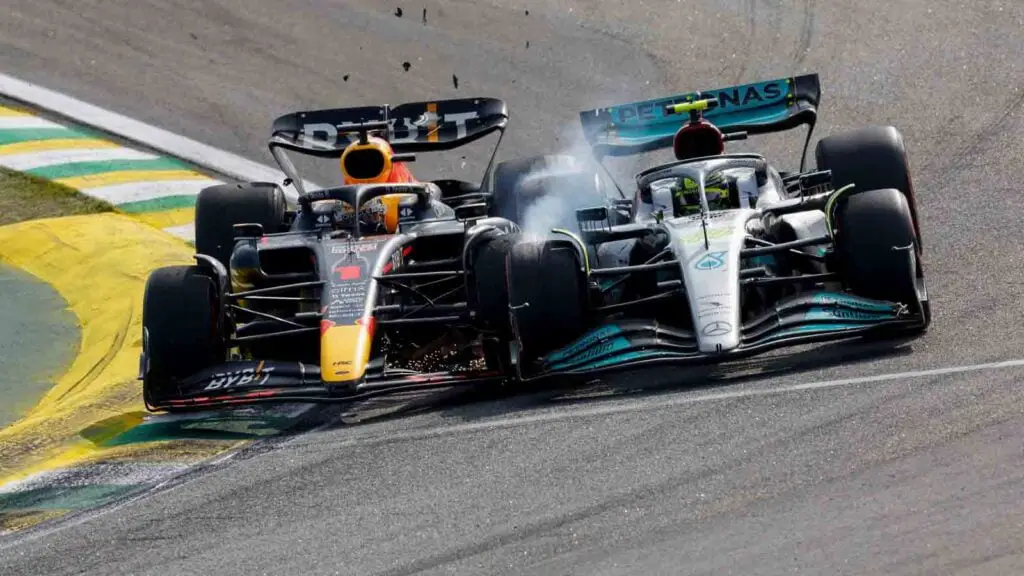
The battle between Lewis Hamilton and Max Verstappen has been one of the most heated and tense rivalries in recent Formula One history. Both drivers have been at the forefront of the sport for several years, with Hamilton holding the record for the most championship titles and Verstappen being widely regarded as one of the most talented drivers on the grid.
The 2021 season saw the two drivers go head-to-head for the first time in a closely contested battle for the championship. Hamilton, driving for Mercedes, and Verstappen, driving for Red Bull, traded blows throughout the season, with each driver taking turns in the lead of the championship.
Silverstone – When The Rivalry Became More Intense
The rivalry between Hamilton and Verstappen was at its most intense during the British Grand Prix, held at Silverstone in July 2021. Verstappen secured pole position in qualifying, with Hamilton starting in second place on the grid. However, in the race’s early stages, Hamilton made contact with Verstappen, causing the Dutchman to crash out of the race and triggering a huge controversy.
Verstappen was furious with Hamilton, accusing him of dangerous driving and suggesting that he had been inadequately punished for the incident. On the other hand, Hamilton maintained that it was a racing incident and that he had done nothing wrong.
The incident at Silverstone set the tone for the rest of the season, with tensions running high between the two drivers and their respective teams. In the following races, Hamilton and Verstappen continued to battle it out on track, with each driver determined to come out on top.
How The Season Ended
The rivalry climaxed at the Saudi Arabian Grand Prix in December 2021. Going into the race, Hamilton held a narrow lead in the championship, with Verstappen needing to win the race to secure his first-ever championship title.
The race was thrilling, with both Hamilton and Verstappen pushing each other to the limit. Ultimately, Verstappen emerged victorious, securing his first-ever championship title and ending Hamilton’s reign as the sport’s dominant force.
The battle between Hamilton and Verstappen has been fascinating to watch, with both drivers pushing each other to new heights of performance. Hamilton’s experience and skill have been matched by Verstappen’s raw talent and fearless approach to racing, making for some of the most exciting racing the sport has seen in years.
Despite their intense rivalry on the track, Hamilton and Verstappen have both spoken highly of each other in interviews and press conferences. Both drivers have acknowledged the other’s talent and dedication to the sport and have expressed mutual respect for each other as competitors.
The Battle Stopped In 2022
With the new rules and regulations that came into play in 2022 and Mercedes struggling to fix their car, Lewis has dropped the order and has been unable to match the Red Bull speed.
Regardless of what happens in the future, the battle between Hamilton and Verstappen will go down in history as one of the most thrilling and intense rivalries the sport has ever seen. Both drivers have pushed each other to the limit and have given fans around the world some of the most exciting racing the sport has ever seen.
The Formula One 2022 Season
The 2022 Formula One season brought major changes to the sport, with a new set of rules and regulations designed to level the playing field and make the racing more exciting for fans.
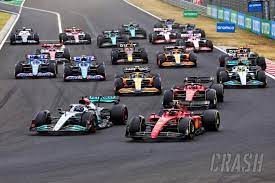
One of the biggest changes coming in 2022 was introducing a new car design featuring a simplified aerodynamic profile intended to reduce the effect of dirty air on following cars.
The hope was that cars would be able to race closely together, making it a more exciting spectacle for audiences around the world.
By and large, this was successful.
The Cost Cap
Another key change for 2022 was the introduction of a cost cap, limiting the amount of money teams are allowed to spend on developing their cars. This continues into 2023 and was designed to make the sport more sustainable and prevent the largest teams from dominating the competition with greater financial resources.
In addition to the cost cap, several other rule changes affected how teams developed their cars and competed on the track. For example, the new regulations required teams to use a standard gearbox and rear suspension, which was intended to reduce development costs and level the playing field.
New Weekend Format
Another significant change for 2022 was the introduction of a new race weekend format, featuring a sprint qualifying race on Saturday to determine the starting order for Sunday’s main race. This was designed to make the racing more exciting for fans and provide a new challenge for teams and drivers.
The new rules and regulations were met with a mixed responses. Some fans praised the changes for their potential to make the racing more exciting and unpredictable, while others expressed concerns that the cost cap and other restrictions could stifle innovation and prevent teams from pushing the boundaries of what is possible.
This was certainly the case with Mercedes, who could not throw their massive resources at their car and solve the porpoising and other problems that slowed them down. In this regard, the cost cap has failed because it has reduced the front runners to Red Bull and Ferrari.
Regardless of the opinions on the new rules, there is no doubt that they had a major impact on the sport and on the teams and drivers that compete in it. For fans, the changes have made racing more exciting and unpredictable.
For teams and drivers, the changes required a significant shift in strategy and approach as they adapted to the new car design and worked within the constraints of the cost cap. This did not really improve the opportunities with the smaller teams.
What Is The Future Of Formula One?
As the world of Formula One continues to evolve and change, there are already plans in place for the sport’s next major overhaul: the 2026 season. The 2026 season promises to bring significant changes to the sport, both on and off the track.
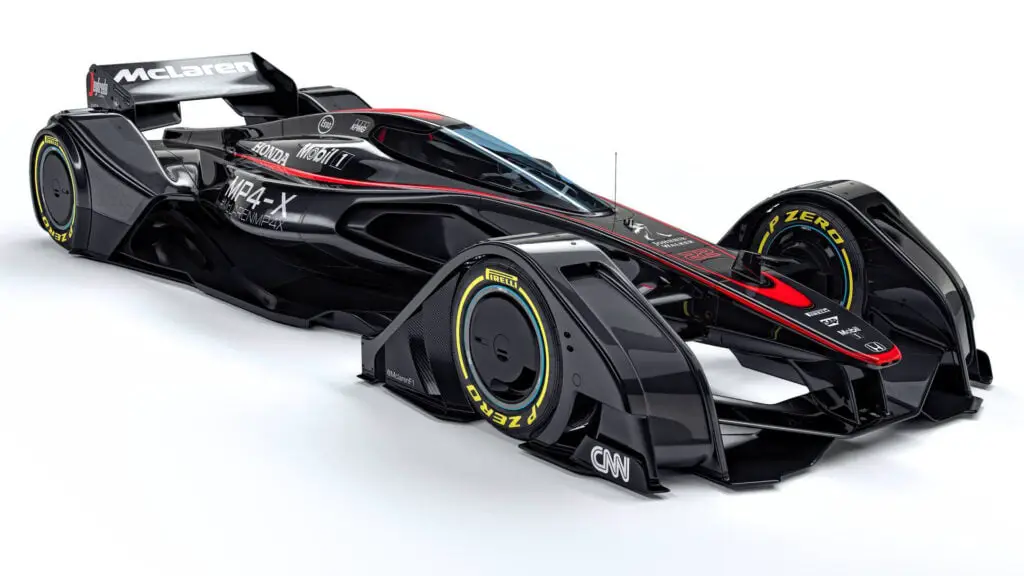
One of the most significant changes coming in 2026 is the introduction of new engine regulations, with a focus on sustainability and environmentally friendly technology. The current hybrid power units will be replaced with new engines that use sustainable fuels, such as biofuels or hydrogen, to power the cars. This is part of the sport’s ongoing efforts to reduce the sport’s carbon footprint as well as promote sustainability.
In addition to the new engine regulations, several other changes will be introduced in 2026. One of the most significant is the introduction of a standard chassis, which will be used by all the teams. This is intended to reduce development costs and level the playing field, ensuring that smaller teams can compete equally with larger teams.
Another major change coming in 2026 is introducing a new race format, focusing on shorter, more intense races. This is designed to make the racing more exciting for fans and to create a more dynamic and unpredictable on-track environment. The new format will also allow for more races to be held throughout the season, with up to 25 races per year being considered.
New Safety Regulations
There are also plans to introduce new safety regulations in 2026, with a focus on improving driver safety and reducing the risk of accidents on the track. This will include new car safety features and new regulations governing track design and safety standards.
Off the track, there are also significant changes coming in 2026. One of the most significant is introducing a new revenue-sharing model to see teams receive a greater share of the sport’s commercial revenue. This is intended to create a more sustainable financial model for the sport and to ensure that all teams have the resources they need to compete effectively.
There are also plans to introduce new regulations governing the use of data in the sport, focusing on protecting the privacy of drivers and teams. This will include new rules governing the collection and use of data, as well as new requirements for transparency and accountability.
Overall, the changes coming in 2026 represent a significant shift for the world of Formula One, focusing on sustainability, safety, and creating a more level playing field for all teams. While there are sure to be some challenges and adjustments required as the sport adapts to these changes, the potential for more exciting, competitive, and sustainable racing is something that fans and experts alike can look forward to.
Standardization And Sustainability
However, there are concerns that the changes could have unintended consequences for the sport, particularly in innovation and development. With a focus on standardization and sustainability, there are fears that the sport could become too homogenized, with less room for teams and drivers to push the boundaries and create truly innovative technology.
Nevertheless, the changes coming in 2026 clearly indicate that the world of Formula One is continuing to evolve and change as the sport seeks to adapt to new challenges and stay relevant in a rapidly changing world. With a renewed focus on sustainability and safety and continuing to create a more level playing field for all teams, the 2026 season promises to be an exciting and transformative period for the sport.
Are There New Teams Joining The Grid In 2026?
Audi has purchased the Alfa Romeo team and will become fully committed to the sport from 2026 onwards.

They have stated that they would prefer German drivers, which would mean displacing Valtteri Bottas and Zhou Guanyu. In addition, there are rumors that they will employ Mattia Binotto, who is also not German.
Red Bull has announced that Ford will join them as the engine partner from 2026, which will make an interesting cross-Atlantic relationship and bring back memories of the Cosworth engines that powered F1 for most of the 1970s and 1980s.
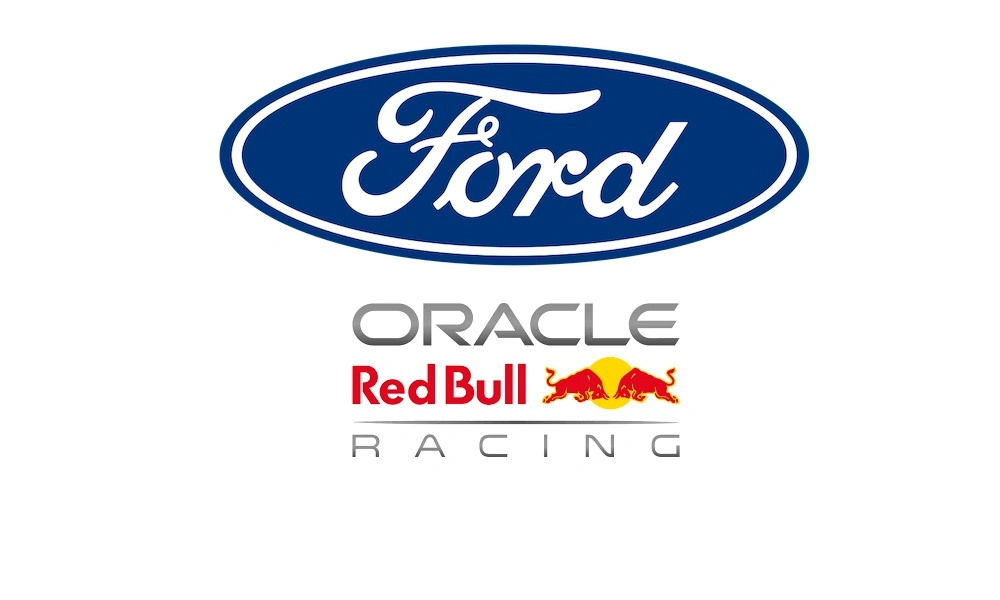
Conclusion
Not only is F1 the most exciting motorsport around, but it also traces its roots to a time before most other racing disciplines.
References
Formula One – Wikipediahttps://en.wikipedia.org/wiki/Formula_One


[…] The History of Formula 1 […]
[…] The History of Formula 1 […]
[…] The History of Formula 1 […]
[…] The History of Formula 1 […]
[…] The History of Formula 1 […]
[…] The History of Formula 1 […]
[…] The History of Formula 1 […]
[…] The History of Formula 1 […]
[…] The History of Formula 1 […]
[…] The History of Formula 1 […]
[…] The History of Formula 1 […]
[…] The History of Formula 1 […]
[…] The History of Formula 1 […]
[…] The History Of Formula One […]
[…] The History Of Formula One […]
[…] The History Of Formula One […]
[…] The History Of Formula One […]